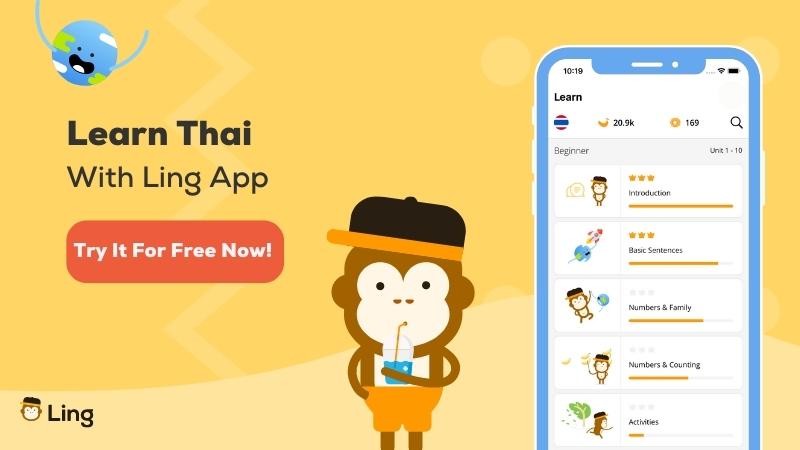We all know the general flow of a conversation. It usually begins with the ‘small talk’ phase before moving forward with what we want actually to talk about. We start by saying hello and then asking, ‘how are you?’
In Thai, saying hello or how are you is no different. Whether you are actually interested in the answer or just asking out of habit, asking how a person is doing is essential.
It can lead to much deeper interactions where you can learn more about the other person. If that sounds interesting to you, then let’s take a look at it today.
How Do I Say How Are You In Thai?
Thankfully, it is not a particularly difficult phrase to remember! The phrase for ‘how are you’ in Thai is: ‘Sabaay dii mǎy?’ (สบายดีไหม).
If you visit Thailand, you will likely hear this word a lot. So, let’s break it down, as we can learn a few good things from this phrase alone.
We covered the meaning behind the word sabaay before. To summarize, it can be translated as meaning ‘comfortable’. Though it does have a slightly stronger meaning.
The word ‘dii’ (ดี), on the other hand, means good.
Now for a little extra lesson, let’s understand about the question word in Thai. You probably already noticed the word ‘mǎy’ (ไหม) at the end of the phrase. This is used to signify that the phrase is a question.
In Thai, these question words are always located at the end of the sentence instead of the beginning which we are used to in English.
Saying that this phrase is often said with either ‘khráp’ (ครับ) or ‘khá’ (คะ) at the end.
Males: ‘Sabaay dii mǎy khráp?’ (สบายดีไหมครับ)
Females: ‘Sabaay dii mǎy khá’?’ (สบายดีไหมคะ)
These are the polite words that can make your words sound more polite and respectful. They are not completely necessary to add when asking someone how they are, but it is a good thing to add in. You should definitely remember these if you learn Thai, as they are pretty important.
It can be weird to adjust if you speak a language that does not use them, but it should feel more natural over time.

How To Reply When Someone Asks How Are You In Thai
Okay, now we know how to say ‘How are you?’ in Thai, but how do we reply? It is actually very simple – you just say the exact phrase back to them but remove the ‘mǎy’ (ไหม) so that it is no longer a question.
‘Sabaay dii ’ สบายดี
Again, you do not need to use the polite word when you say this, but if the person is kind enough to ask how you are or use the word when asking, then you should probably be polite to them back.
Males: ‘Sabaay dii khráp’ (สบายดีครับ)
Females: ‘Sabaay dii khá’ (สบายดีคะ)
In Thai, it is not uncommon to remove the pronoun from the sentence if it is evident from the context. However, some people may use the pronoun, which will go at the beginning of the sentence.
What about if you are not feeling good? Once again, we will be taking a part of the question and removing both the question word and the word for good. Then it is just a case of adding the negative word to the beginning:
‘Mây sabaay’ (ไม่สบาย)
The word ‘mây’ (ไม่) here is not to be confused with the question word ‘mǎy‘ (ไหม) from earlier. This one means no or not and is placed before a verb to make it a negative. In this case, it would mean ‘not good.’
Of course, once you have answered, you can ask the same question back. Another way you can answer is by saying, ‘and you?’. There are actually several different ways to go about this, but probably the most common way is to say ‘lɛ́ɛw khun lâ’ (แล้วคุณล่ะ). This is much more informal and sounds more natural too.

A Typical Greeting Conversation In Thai
Now that we have the basics down let’s take a look at a (very) basic conversation in Thai so you can see how to use this phrase.
A: Sawàtdii khâ (สวัสดีค่ะ) – Hello
B: Sawàtdii khráp (สวัสดีครับ) – Hello
A: Sabaay dii mǎy khá? (สบายดีไหมคะ) – How are you?
B: Phǒm sabaay dii khráp lɛ́ɛw khun lâ khráp? (ผมสบายดีครับ แล้วคุณล่ะครับ) – I am good. And you?
A: Chǎn sabaay dii khâ khɔ̀ɔpkhun khâ (ฉันสบายดีค่ะ ขอบคุณค่ะ) – I am good. Thank you.
Not too tricky, right? Once you learn the phrase how are you In Thai, you should be able to remember the different answers as they all take elements from the initial question.
See How Your Loved Ones Are Doing
Now that you are armed with another of the common phrases you will likely be using on a near-daily basis. You should be better set to have deeper conversations with other people.
More than just a greeting, the ability to ask ‘how are you’ in Thai helps to show that you care about others. Whether or not you are prepared for the answer is another question.
Try it out the next time you are meeting with a friend and see how things are going with them.
So, how are you? The Ling app is the perfect option if you want to practice this phrase and many more. Try out the chatbot feature to increase your understanding of the Thai language.

Try Out Thai Conversations With The Ling App
Now that you’re familiar with saying how you are in Thai, you should get your next vocabulary lessons with the Ling app. With Ling app, you’ll not just learn Thai words, but you can also practice your Thai script daily. It’s one of the best ways to begin your journey of becoming fluent in Thai. And who knows, you might even just encourage your friends to learn Thai with you.
Download the Ling app now on the App Store or Play Store and learn more than just saying how are you in Thai!
Updated by: Gwyn




































































